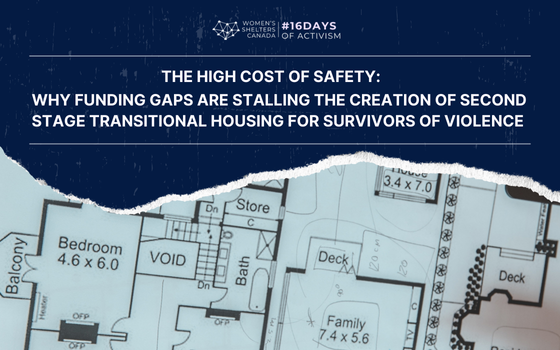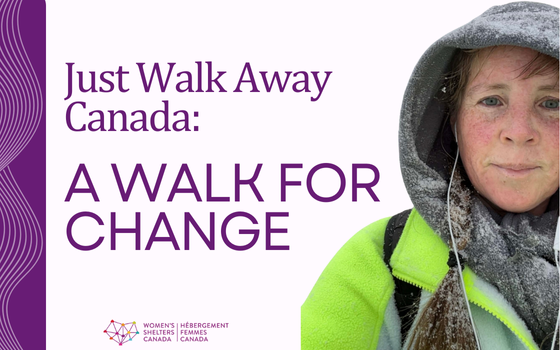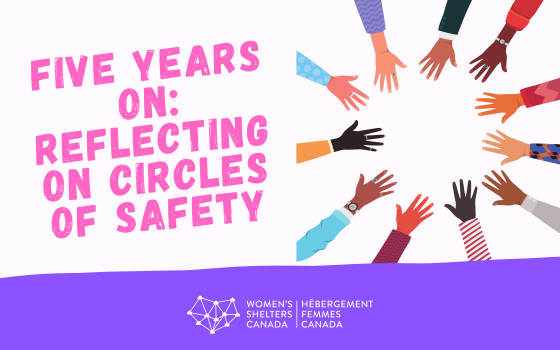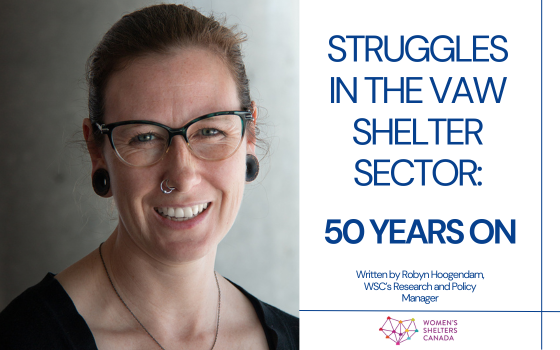Women’s Shelters Canada (WSC) and the National Aboriginal Circle Against Family Violence (NACAFV) are collaborating on a new research project exploring the funding that violence against women (VAW) and violence against Indigenous women (VAIW) shelters receive and identifying gaps and disparities. In this interview, Krys Maki (Research and Policy Manager at WSC) and Anita Olsen Harper (Researcher at NACAFV) tell us more about their new project and what they hope to achieve through this research.
WSC: To start, could you tell us a bit about this project and how it came about?
Krys: VAW shelters across the country are funded in different ways. While most shelters receive their core operational funding from their respective provincial or territorial government, shelters located on First Nations reserves are funded by Indigenous Services Canada (ISC), a federal government department. For several years, NACAFV and WSC have heard anecdotally from our members that there are discrepancies in funding between provincially/territorially funded shelters and ISC-funded shelters but we didn’t have any hard data to back it up. NACAFV approached us to collaborate on a project that would investigate these funding gaps and shed light on the inequities facing VAW shelters across Canada. We were excited to partner on this three-year research project, which includes a national survey and interviews. The main goal is advocacy.
WSC: That’s really interesting. So what do we know about funding disparities to date?
Anita: The minimal research done in this area indicates that on-reserve or ISC-funded women’s shelters receive less than mainstream women’s shelters do from the provinces or territories. In 2005, the Alberta Council of Women’s Shelters (ACWS) found that all Alberta’s federally-funded shelters collectively received a total of $1.05 million less than they would have if the province had funded them. In 2020, a similar study in Manitoba concluded that the ISC Family Violence Prevention Program (FVPP) funded below the levels of its provincial counterpart. To get precise figures, research would have needed to use Access to Information processes since both the federal and provincial FVPPs did not respond to direct questions.
WSC: You mentioned researchers having to use Access to Information requests. Can you tell us more about the challenges you have faced in gathering information about funding disparities?
Anita: In 2019-2020, a parity study of the allocations from the federal and provincial FVPPs of VAW shelters in one province was meant to obtain at least an approximate dollar value of a disparity between the two levels of funding. However, this objective was impossible to fulfill because of the lack of transparency in both the ISC and the province about shelter financial and procedural matters. Perhaps those working in these areas themselves did not know and therefore could not respond appropriately and accurately. Or, it may be that the government does not want certain details available for the public’s consumption; perhaps these figures would not paint a positive picture of the department. After all, if governments’ facts and figures were to portray a glowing picture, this information would be readily available. We keep at this work because all money for all shelters comes from taxpayers and this ought to be public information.
WSC: WSC and NACAFV are working together on this project. Can you tell us about the collaborative aspects of this project, and what makes it unique?
Krys: Collaboration is all about relationships. For over a year, we’ve been working closely, and every decision is carefully discussed and reviewed by me, Anita, and the advisory committee, which includes the executive directors from both organizations. Anita is bringing a wealth of expertise and knowledge to the work, and I am so grateful to be working with such a skilled researcher. I have appreciated the care we have taken to consider each stage of the research but also how the research resonates with our goals of advocacy and positive social change. For example, because the shelters are funded so differently, we had to craft questions in a way that would resonate with the experiences of that shelter. For instance, ISC-funded shelters may receive their funding from a band council rather than ISC directly, so our questions had to reflect this reality. Drawing on the reach of our two national networks will have a big impact on the kind of advocacy we will be able to achieve!
WSC: You have mentioned advocacy a few times. What do you hope to advocate for as part of this project?
Anita: As recently as the last fiscal year, funding from ISC has increased and we believe this is from NACAFV’s and WSC’s persistent advocacy efforts. However, there have been no announcements from either provincial governments or from ISC of an enduring rise in women’s shelter allocations. With this research, we hope to advocate for and see a directive to this effect since all women’s shelters, both off- and on-reserve, are underfunded. Our efforts are aimed at making drastic improvements to the lives of vulnerable women and children who are leaving behind lives marred by domestic violence.
WSC: What kind of change do you hope this project can create?
Anita: I would like to see regionally-developed funding formulas that consistently meet the needs of VAW/VAIW shelters. Different areas in Canada have different needs and these must be taken into account so that shelter offerings really do meet the needs of their clients (e.g. outreach and culturally-appropriate programs and services).
Krys: I hope that the advocacy from our work can change current funding policies so that ISC shelters are equitably funded. This would have many positive outcomes such as better salaries for staff and consistent programming for all VAW shelters on- and off-reserve. Ultimately, it would ensure that survivors of domestic violence, regardless of their postal code, have equitable access to services.
WSC: We look forward to seeing and sharing the results of your work. Thank you both for this discussion!
This research project is funded by the Canadian Women’s Foundation.








Leave A Comment
You must be logged in to post a comment.